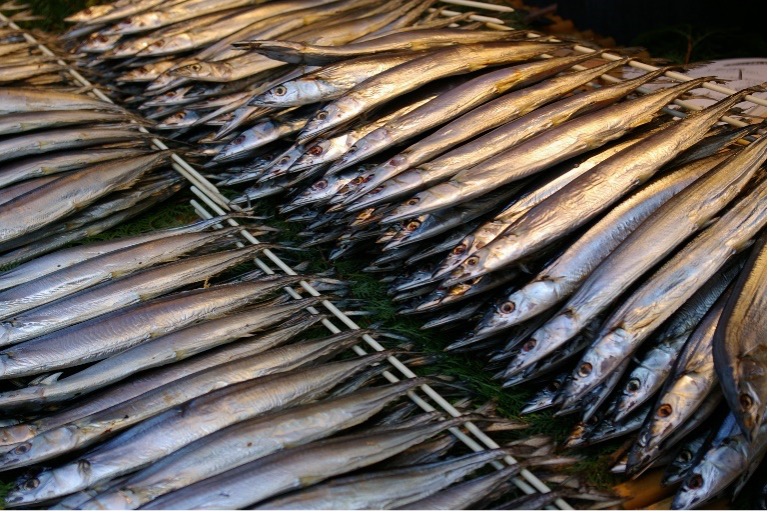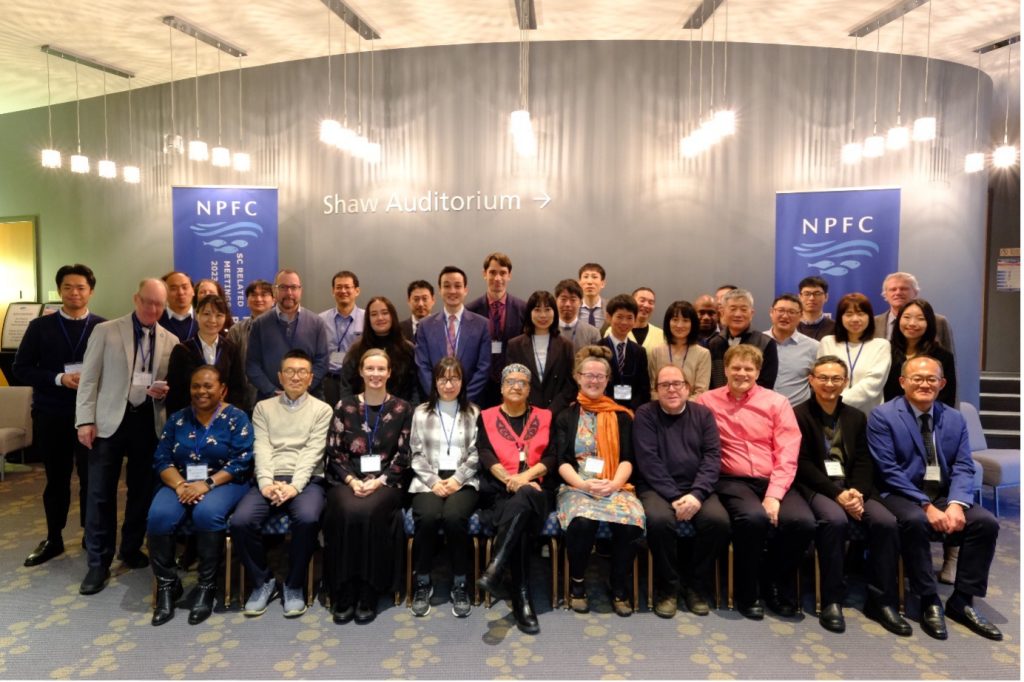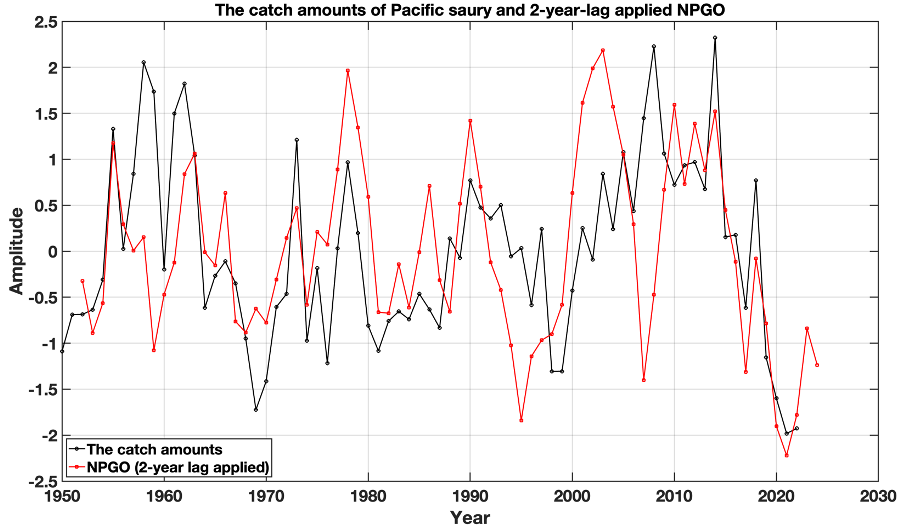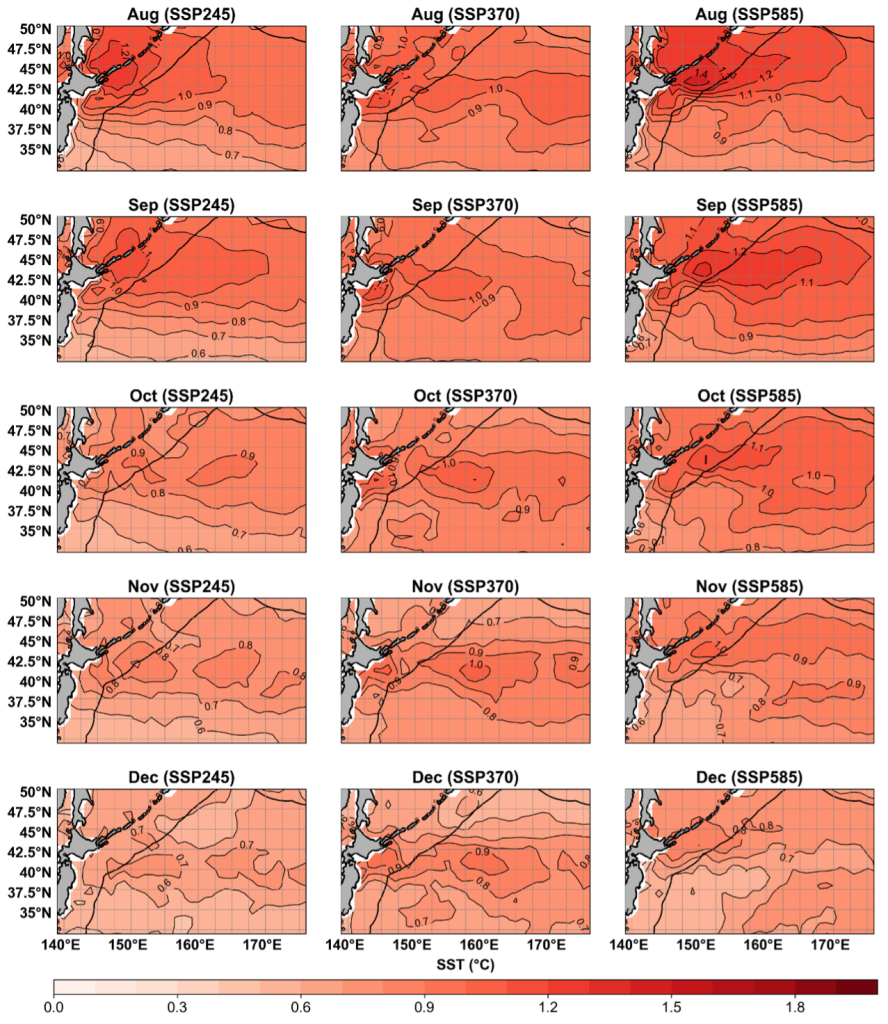30 mai 2025

As a physical oceanographer, I’ve dedicated a significant part of my career, including my work with the North Pacific Fisheries Commission (NPFC), to understanding the intricate dance between our oceans and the valuable fish stocks they support. My focus has been on the challenges and impacts of climate change on the North Pacific marine ecosystem, and specifically, on its precious resource, Pacific saury.

For decades, fisheries management has often centered on regulating fishing activities. It’s well understood that fishing effort is a primary driver of changes in fish populations, and indeed, fisheries scientists continually study how fishing impacts fish biomass. However, the very foundation of this system – the marine environment itself – is also being fundamentally altered by climate change. This new reality demands a multi-faceted perspective. While the ocean environment alone cannot explain all fluctuations in fish catches, understanding its influence is becoming increasingly critical. My study aims to explore a complementary dimension: if we assume relatively constant fishing effort, how do long-term environmental variations, particularly those driven by climate change, directly influence fish abundance? This approach helps isolate and better understand the ocean’s role and, subsequently, how to better manage fishery resources, including through the development of science-based management procedures (MPs), also known as harvest strategies.
Pacific saury, once abundant at local markets and on dinner plates, has become scarce. This isn’t just an anecdote; data paints a stark picture. Figure 1 illustrates the plummeting catches of Pacific Saury in the North Pacific from 1950 to 2022, alongside the fluctuations of the North Pacific Gyre Oscillation (NPGO) Index, with a 2-year lag applied to the NPGO data. The recent decline in catch amounts (e.g., since 2010), coinciding with a similar phase shift in the NPGO index (from Positive to Negative), is a potent warning sign. This reflects the combined pressures of escalating climate change impacts and ongoing fishing activities, among other anthropogenic factors.

While large-scale climate phenomena like El Niño are well-known, the North Pacific has its crucial indicators, such as the Pacific Decadal Oscillation (PDO) and the North Pacific Gyre Oscillation (NPGO), which influence sea surface temperatures and marine ecosystems. By isolating the environmental component (under the assumption of stable fishing effort), my study revealed that the NPGO appears to wield a more decisive influence over the fluctuating fortunes of Pacific saury, as visually suggested in Figure 1.
How does an ocean-wide pattern like NPGO affect a specific species? These large-scale climate patterns influence major ocean currents, which serve as both highways and barriers for marine life. They also alter the distribution and abundance of phytoplankton and zooplankton – the primary food source for forage fish species like Pacific saury. Consequently, we’re seeing shifts in Pacific saury’s migration patterns. Recent increases in sea surface temperatures, a hallmark of climate change, are contributing to the shifting of Pacific saury fishing grounds further east as the fish seek suitable temperatures and feeding opportunities in a rapidly changing ocean. These NPGO-influenced shifts and broader warming trends can impact migratory routes, spawning times, and the suitability of traditional feeding grounds.
Perhaps the most striking discovery from my study is the predictive power inherent in the NPGO’s patterns when analyzed alongside Pacific saury catch data, under the assumption of relatively consistent fishing effort. As illustrated in Figure 1, a remarkably strong correlation emerged: specific shifts in the NPGO index can foreshadow changes in Pacific saury catches approximately two years in advance.
It’s an important question whether these observed shifts in saury linked to NPGO are solely due to its natural variability (e.g., ENSO, PDO, and NPGO) or if they are being exacerbated by broader climate change. While my study focused on the statistical relationship between NPGO phases and saury catch/distribution, it’s widely acknowledged that the North Pacific is experiencing significant warming, a trend primarily driven by climate change. This broader warming trend, particularly in traditional saury fishing grounds, undoubtedly interacts with natural climate patterns like the NPGO. Some scientific literature even suggests that climate change itself might influence the behavior and variability of these large-scale oscillations. Therefore, it is plausible that both the inherent cyclical nature of the NPGO and the overarching impacts of climate change are intertwined factors contributing to the observed changes in Pacific saury.
Regardless of the precise balance of these drivers, the two-year lead time offered by the NPGO-saury relationship provides a valuable, science-based tool. It allows us to anticipate potential future fluctuations driven by these environmental shifts. This foresight is critical and can be considered alongside dedicated analyses of fishing impacts conducted by fisheries scientists, offering a precious window of opportunity to implement and refine science-driven tools, such as MPs to best safeguard Pacific saury in a changing ocean.
The NPFC is tackling these combined challenges and spearheading efforts to integrate climate change considerations into MPs and stock assessments, while also continuing to manage fishing activities. This is where studies like mine contribute – by helping to untangle the environmental threads, we can transform abstract climate risks into manageable, actionable information. This scientific foundation empowers the NPFC to develop more sophisticated and robust MPs that are designed to be resilient to the uncertainties introduced by both climate change and other pressures.
A particularly powerful tool in this endeavor is Management Strategy Evaluation (MSE). MSE is a process where scientists and managers simulate the entire fisheries system under different conditions, including environmental and climate influences (like those identified in my NPGO study). The goal is to test how well different MPs can achieve pre-agreed objectives, helping to identify management approaches that are likely to perform best, even in the face of real-world uncertainties and changing conditions. My NPGO study, for instance, can provide valuable input for the “operating models” within MSE, helping to define plausible environmental scenarios – including those driven by climate change – against which these strategies are rigorously tested.
The NPFC has made commendable progress in advancing the management and scientific understanding of Pacific saury. Key milestones include finalizing the species’ first comprehensive stock assessment in 2024, which subsequently led to the establishment of a Total Allowable Catch (TAC). Building on this, an interim Harvest Control Rule (HCR) was adopted in 2024, based on preliminary simulation testing, providing a science-based framework for TAC determination. To further enhance long-term sustainability, the NPFC has proactively established a dedicated Small Working Group on Management Strategy Evaluation for Pacific Saury (SWG MSE PS). This group, which holds regular meetings and involves invited experts, is tasked with the critical work of developing a full MSE. As this group continues its work to develop a robust MSE, it is imperative that the NPFC ensures these evaluations explicitly consider and incorporate climate-related scenarios, including the effects of ocean warming, shifting migration patterns (like the eastward trend in saury catches), and other environmental impacts such as marine heatwaves, to build truly resilient management procedures for the future.
To comprehensively understand climate change impacts, NPFC is actively strengthening collaborations with international scientific organizations like the North Pacific Marine Science Organization (PICES). NPFC also supports initiatives like the Basin-scale Events and Coastal Impacts (BECI) project, which aims to create a North Pacific Ocean Knowledge Network. Additionally, NPFC can utilize its data-sharing agreements with other regional fishery management organizations to help identify areas for joint collaboration and share best practices regarding climate-informed management procedures.
The goal is to build predictive models that can forecast future fishing grounds and stock productivity under various climate change scenarios. To illustrate the potential environmental shifts, Figure 2 displays projected changes in sea surface temperature (SST) across the North Pacific for the primary Pacific saury fishing season (August to December). These projections are based on different Shared Socioeconomic Pathways (SSPs), which are scenarios of future socioeconomic development used by climate scientists to model various levels of greenhouse gas emissions and resulting climate change.
As the maps in Figure 2 show, a consistent and concerning trend emerges across all SSP scenarios: a significant rise in sea surface temperatures is projected for the Northwestern Pacific during the peak saury fishing season. This warming is not trivial. For a species like Pacific saury, which is sensitive to water temperature, such sustained increases during their main feeding and migration period can have profound consequences. Warmer waters can alter their traditional migration patterns, potentially pushing them further eastward in search of cooler, more suitable habitats. This shift not only changes where fishing might occur but can also impact their survival rates and reduce their reproductive success by affecting spawning grounds and early life stage development. Therefore, understanding these projected SST changes across the entire fishing season under various climate scenarios is crucial for developing robust, forward-looking management strategies. While presenting multiple scenarios and months might seem like a lot of information at once, it is essential for appreciating the full spectrum of potential future conditions that NPFC’s management strategies must be prepared to address.

The journey through the North Pacific’s changing oceans reveals a stark reality: climate change presents a profound challenge, acting in concert with the ongoing impacts of fishing. Yet, there is a determined and collaborative response. My hope is that scientific endeavors, like my study on the NPGO’s influence (under specific assumptions to isolate environmental signals), provide essential building blocks for climate-adaptive MPs. These tools are about preparing for an uncertain future, ensuring management approaches are resilient and capable of safeguarding these valuable resources by considering all major drivers.
The path ahead is complex, but the commitment to science-based decision-making that considers all major drivers – both environmental and anthropogenic – offers a beacon of hope.

Dr. Jihwan Kim is an Oceanographic Engineer at Collecte Localisation Satellites (CLS) Group. He previously was a Fisheries and Data Scientist with the North Pacific Fisheries Commission.